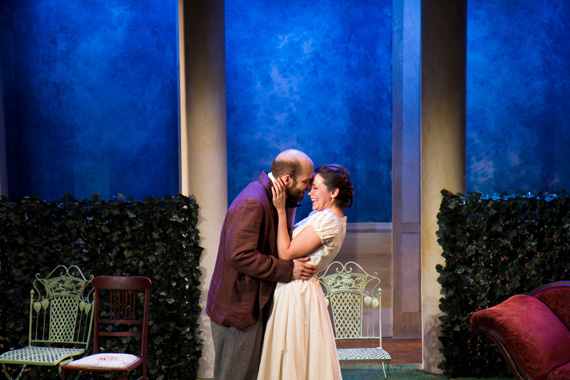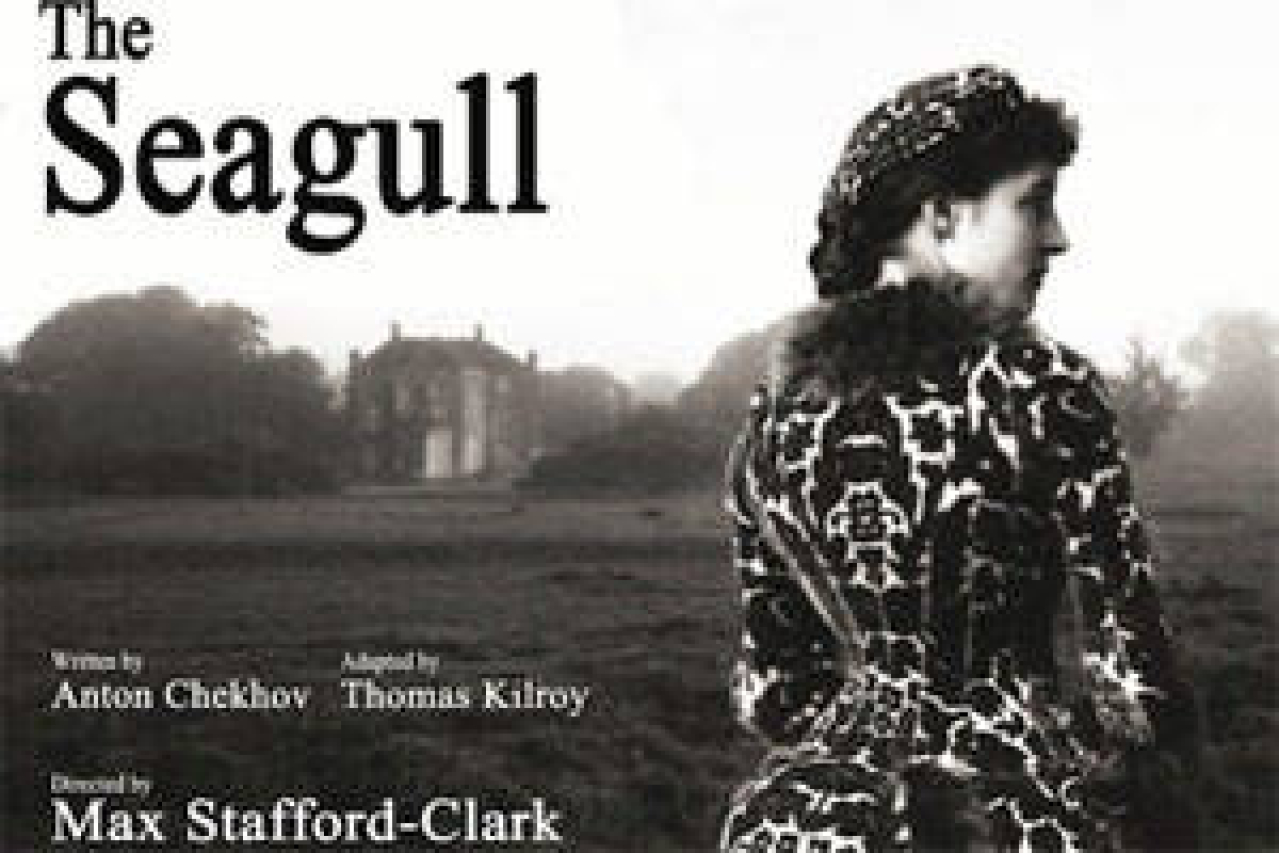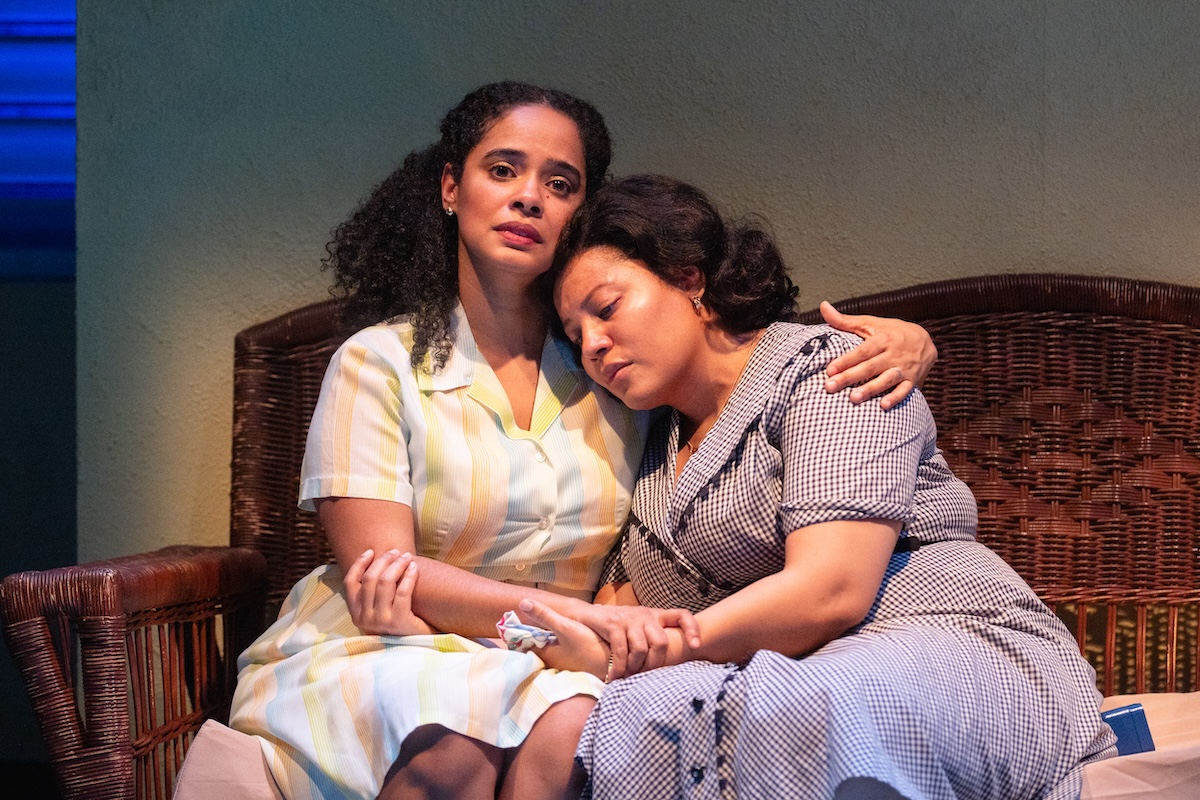The Seagull

(© Prabhaker Jeff Street)
What does 19th century Russia have in common with 19th century Ireland? If you guessed “oodles of unhappiness,” you’re not far off the mark. You might also note that the late 1800s saw major social and agricultural upheaval in both countries deriving from the emancipation of the serfs in Russia (1861) and the agitation of the Irish National Land League in Ireland (1879-1882). This is the premise for Thomas Kilroy’s sensitive and intelligent Irish adaptation of Anton Chekhov’s The Seagull, which is now performing at the Culture Project under the direction of former Royal Court Theatre Artistic Director Max Stafford-Clark. Surprisingly, this historical parallel is actually ancillary to the devastating tale of unfulfilled expectations that underpins this production. You might come for the red-faced Irish politics, but you’ll stay for the teary dramatics and silent suffering. Indeed, Russia and Ireland have much in common.
If you’re going to draw parallels between the respective agrarian class conflicts of late 19th century Russia and Ireland, The Cherry Orchard seems like the obvious Chekhov play to adapt. The famous Russian author’s final play, about a bankrupt Russian aristocratic family and the upwardly mobile son of one of their former serfs who purchases their estate, seems perfectly suited to transposition into the key of Éire. Like in Russia, the late 1800s in Ireland (and the greater United Kingdom) saw a rapid decline in the power of landed gentry and the rise of the bourgeoisie. Kilroy boldly takes the road less traveled in adapting The Seagull, Chekhov’s first major play, about an aging actress, her moody son, and various other people wasting away in quotidian misery on their family estate.
Dorn becomes Dr. Hickey (Rufus Collins). Shamrayev becomes Cousin Gregory (Tim Ruddy). Masha becomes Mary (Amanda Quaid). They are all living in the Desmond House of West Ireland, owned by aging British civil servant Peter (Kenneth Ryan). His sister Isobel (Trudie Styler) is an over-the-hill actress famous for her work on the London stage. Her angry (likely in part because he is bald and 25) son Constantine (Slate Holmgren) is an unappreciated playwright with an interest in ancient Celtic lore. He’s also in love with Lily (Rachel Spencer Hewitt), an Irish beauty from a neighboring estate. She has her sights set on loftier goals and sees the possibility for a future as an actress when she meets Mr. Aston (a charmingly self-deprecating but transparently flirtatious Alan Cox), an accomplished writer and current boyfriend of Isobel. She also finds him dreamy. How will such a complicated web of unrequited love ever resolve itself? Spoiler alert: No one lives happily ever after.
Styler plays Isobel like Faye Dunaway plays Joan Crawford: Too much is never enough. It feels like she’s always on, always playing the most dramatic tactic to get what she wants. Like mother like son, Holmgren is equally ridiculous as Constantine. Their über-dramatic third-act scene together is a serious example of life imitating art, a high point of the play. It’s like watching a well-choreographed virtuoso duet between two prima ballerinas. This quasi-incestuous mother-son act turns in a mean Hamlet and Gertrude. Paging Doctor Freud…
In his wisdom, set designer Peter Hartwell has seen fit to include a fainting couch, which proves to be the MVP set piece of these bourgeois bohemian follies. The dusty outlines against the walls, signifying where off-loaded paintings used to hang, are an inspired touch that subtly reminds the audience of the financial distress looming in the shadows. None of their tenant farmers are paying rent so they have to sell their finery to maintain an idle lifestyle.
Stafford-Clark has led the ensemble to nuanced and dynamic performances. Constantine’s mood switch between Act 3 and Act 4 is palpable: It may only represent the difference of two years, but it seems as though he’s aged 40. Hewitt switches from her provincial Irish dialect to an affected received pronunciation in the third act, in an effort to impress Aston. She switches back later, after her dreams of the stage have been dashed.
That is the real story of The Seagull: youthful idealism crushed under the wheels of life. The setting is as incidental as the melancholy Bach wafting in from offstage in the fourth act. It sets the mood and foreshadows tragedy to come, but does little to shed light on the monumental sociopolitical conflicts taking place outside the estate walls. The politics stay under the surface and emerge only occasionally for someone to curse the name of Charles Stewart Parnell. They are given little analysis or deep thought.
Perhaps that is the most appropriate choice of all: None of these well-to-do people really thought very hard about the discontent of their underlings until it was far too late. Their privilege seemed a given, allowing them time for wild affairs and fantastic blowups. As it turns out, that was never meant to last. As Kilroy correctly surmised, this is a story that rings true universally.











